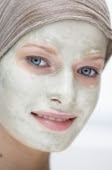Cracked heels and rough scaly skin on the feet are usually the result of years of negligence towards feet care. This condition is still more aggravated by exposure to chilly
winter air. Cracked soles or feet are painful and many a times they bleed. Such feet feel like sandpaper against towels and bed sheets, indicating an immediate need for treatment. At weddings, functions and parties, one tends to notice that beautifully attired women in expensive
sarees, displaying sizeable gold ornaments, and wearing costly footwear, have cracked feet that look dry, dirty and extremely ugly. Yes, there are many creams and lotions available in the market promising us soft, smooth feet in just two or three days. But for those who have used it, they know that the results are not as magical as it is hyped nor are the results everlasting. Prevention is surely better than cure. So if you take
care of your feet religiously so that it becomes a part of your daily routine, you will have beautiful, problem-free feet for life.
 A few tips in feet care may be useful:
A few tips in feet care may be useful:
- Clean your feet with warm water and soap every night before bed.
- Rub a thick lotion or moisturizing cream on them.
- Avoid exposure to sunlight or cold wind by wearing day time socks.
- Avoid exposing the heels and toes to dirt and grime.
- Clip and file long nails.
- Try a good pedicure occasionally.
- Polish those nails and remove peeling polish promptly.
- Do not walk barefoot if you have developed cracked soles.
Home remedies for cracked heels
* Pour hot water into a big basin sufficient enough to immerse your feet. Dissolve one tablespoonful of baking soda (soda bicarb) in water and keep your feet immersed in it for about 10 minutes. Continue this treatment for 2-3 days. If necessary you may gently slough off using pumice stone; wash and dry. Read Pamper your feet. After that you can treat your feet with medications and creams.
* Prepare this medication for treating your cracked heels; it works as effectively as those expensive foot-care creams.
Ingredients:
Wax
Coconut oil
Ghee
Camphor (kapur) tablets
Method:
Take three parts of wax, one part of coconut oil, one part of ghee and 10-15 tablets of camphor. Heat the whole thing in a vessel using the double boiling method. Then allow it to cool. On cooling it becomes a soft mass. Preserve this ointment in a bottle. Clean the heels and soles well, or treat yourself with a warm foot bath as mentioned above. Apply this ointment before going to bed and cover the feet with clean cotton socks. Repeat this treatment for three days.
* You can also crush an onion; apply the pulp over the cracked area and bandage it.
* Or you may burn the outer skin of a ripe banana and fill the cracks with its ash.
* Another remedy is to boil a cup of milk and then add the juice of a lemon and a teaspoonful of glycerin to this boiled milk. After half an hour apply this mixture over the cracked heels and soles, preferably in the night. This not only soothes your cracked heels but also makes you feet smooth.
* For not so severe cracks, you may try massaging the soles of your feet with sesame (gingelly) (til) oil and then foment the feet by keeping them in warm water.
* If you can procure the juice of an unripe mango/mango leaves or gum collected from the bark of the tree, then this can also be applied on the cracks of the soles effectively.
 The day dawns beautifully for those who have had a night of good sleep. But the same day drags on for those who have spent a disturbing, sleepless night. Sleep is a biological necessity even as eating and drinking are.
The day dawns beautifully for those who have had a night of good sleep. But the same day drags on for those who have spent a disturbing, sleepless night. Sleep is a biological necessity even as eating and drinking are.


















